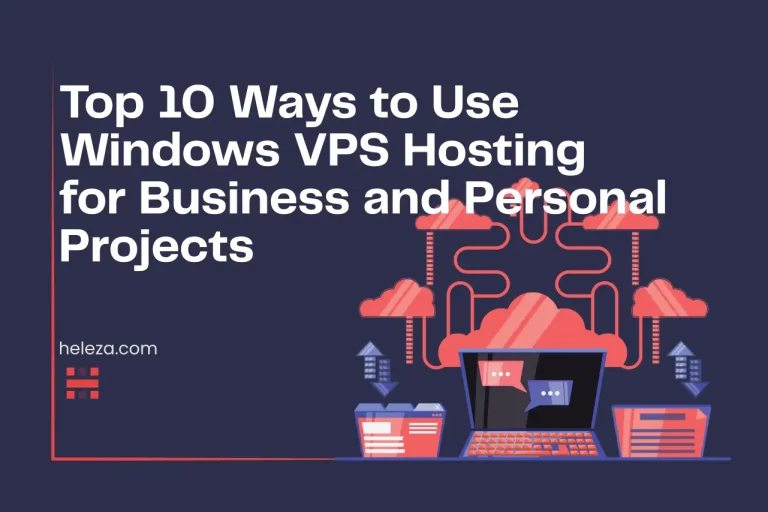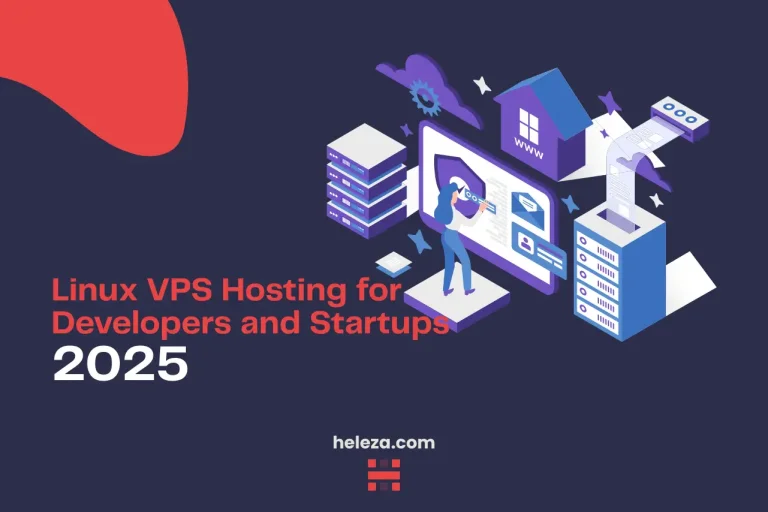Plesk VPS Plans: How to Choose the Right Option in 2025
Plesk VPS plans give you dedicated resources with an easy, powerful control panel, making them ideal for agencies, e-commerce, and fast-growing sites in 2025.
Choosing a control-panel-powered VPS can make or break your hosting strategy in 2025. If you manage client sites, ecommerce stores, or content platforms, Plesk VPS hosting offers a clean interface, first-class WordPress automation, and enterprise-grade security—without the bloat. This guide shows you how to choose the right plan, which features actually matter, and why Heleza’s Plesk VPS is a smart, scalable choice for businesses and agencies.
What is Plesk VPS hosting, and who is it for?
Plesk VPS hosting combines the flexibility of a virtual private server with the Plesk Obsidian control panel. On a VPS, your CPU, RAM, and storage are isolated from other tenants, so performance and security are predictable—unlike shared hosting. Plesk adds an intuitive GUI for site owners, developers, and resellers to create websites, mailboxes, databases, SSL, and staging with minimal friction. Plesk runs on both Linux and Windows, so mixed stacks are easier to manage under one interface.
Why Choose Plesk VPS Plans in 2025?
Two standout advantages are automation and security. Plesk’s WordPress Toolkit centralizes cloning, staging, updates, hardening, and smart plugin/theme management—critical for agencies that maintain dozens of installs. Meanwhile, the Security Core layers proven defenses like a Web Application Firewall (ModSecurity) and Fail2Ban integration to block malicious traffic. These aren’t marketing buzzwords; they’re productized, admin-ready capabilities documented by Plesk.
How to choose Plesk VPS resources (CPU, RAM, storage)
Right-sizing prevents slowdowns and overspend.
- CPU cores: Dynamic sites, WooCommerce, and builders benefit from 2–4 vCPU minimum; heavy PHP workers, search indexes, or queues often need 4–8 vCPU.
- RAM: 4–8 GB suits small portfolios; 8–16 GB is safer for ecommerce or multi-tenant agency stacks.
- Storage: Prefer NVMe/SSD for database-heavy workloads; it dramatically reduces IO wait and speeds page loads.
- Bandwidth: Ensure enough monthly transfer for images, downloads, and admin activity; add CDN for global audiences.
Tip: baseline with 2 vCPU / 4–8 GB RAM / fast SSD, then scale. This keeps TTFB low and accommodates caching layers.
Linux vs Windows on Plesk VPS
Plesk supports both operating systems. Choose Linux for PHP stacks (WordPress, Laravel, WooCommerce) and Windows for ASP.NET apps, MS SQL, or legacy Windows-only software. Your team’s tooling matters too—Linux distributions like Ubuntu 24.04 are actively supported in Plesk Obsidian, which simplifies updates and packages.
Migration to Heleza
We move your sites to a Plesk VPS with zero downtime
Must-have Plesk features to evaluate
- WordPress Toolkit
From a single dashboard, manage core updates, plugins, themes, staging clones, and maintenance mode. It’s built for speed and safety at scale. - Security Core: WAF + Fail2Ban
Plesk integrates ModSecurity (WAF) to filter malicious requests and provides controls to enable, configure, and update rulesets—plus Fail2Ban to mitigate brute-force attacks. - Extensions marketplace
Add caching, backup, SEO tooling, cloud storage connectors, and more—from OneDrive Backup to Google Workspace integrations—directly from the Plesk Extensions catalog. - Server stack control
Plesk for Linux manages Apache/Nginx and related services. You can tune PHP handlers, opcache, and web server settings per domain without SSH deep-dives.
Plesk VPS vs shared and dedicated hosting
- Compared with shared hosting: VPS isolates resources and gives root-level controls; shared hosting is cheaper but resource contention can throttle performance under load. Authoritative guides consistently note shared hosting’s limits for serious growth.
- Compared with a dedicated server: Dedicated delivers full physical resources but costs more and can be overkill for medium workloads. A VPS offers a sweet spot—dedicated-like control with lower entry cost and easier upgrades.
Performance blueprint for Plesk on a VPS
- Pick NVMe/SSD storage for databases and media libraries.
- Enable PHP opcache and consider object caching (Redis) for dynamic apps.
- Use the WordPress Toolkit to set safe auto-updates and hardening.
- Turn on WAF and Fail2Ban; review logs monthly.
- Split heavier sites into separate subscriptions to prevent “noisy neighbor” effects within your own stack.
Security checklist for Plesk VPS
- Force HTTPS with Let’s Encrypt or commercial SSL.
- Keep Plesk and system packages current.
- Configure backups to remote storage (e.g., OneDrive Backup extension).
- Enforce strong passwords and optional 2FA for all panel users.
- Use per-site PHP versions and disable unused services.
Affordable VPS Plans with Plesk Panel
Hosting panels incur their own license fees, which are in addition to the VPS price; this is a common industry practice. Some comparisons note how licensing can influence TCO decisions between panels and across account counts—worth factoring into your budget expectations.
Compare Plans and Save
Find the right CPU/RAM combo with transparent monthly pricing
Decision framework: which Plesk VPS plan is “right”?
- One to five WordPress sites, light traffic
2 vCPU, 4–8 GB RAM, NVMe storage, WAF enabled, WordPress Toolkit. - Agency portfolio (10–30 sites)
4 vCPU, 8–16 GB RAM, NVMe, Redis, scheduled backups, staging clones. - Ecommerce or membership site
4–8 vCPU, 16 GB RAM+, NVMe, object cache, CDN, robust backup strategy.
Why choose Heleza Plesk VPS plans
Heleza pairs predictable monthly pricing with optimized VPS infrastructure and 24/7 support. Plans include fast SSD storage, quick scaling between tiers, free migrations, and access to Plesk features that agencies and SMBs rely on. Explore configurations that match your resource profile and budget at Heleza’s Plesk VPS page.
Get Plesk VPS Now
Spin up a fast, secure server with WordPress Toolkit and WAF included.
It’s a virtual private server managed through Plesk Obsidian, giving you isolated resources plus a GUI to administer websites, databases, email, SSL, staging, and security.
Yes. Current Plesk releases support modern Linux distributions (e.g., Ubuntu 24.04) and Windows Server, letting you standardize on one panel across stacks.
It centralizes WordPress lifecycle tasks—cloning, staging, updates, and hardening—to streamline management at scale.
Plesk includes a Security Core with ModSecurity WAF and Fail2Ban integration. With correct configuration, you mitigate common exploits and brute-force attacks.
For performance and control, yes. VPS isolates CPU, RAM, and storage, which shared hosting cannot guarantee.







